technology
Unveiling the Future: Digilife Global Technology Trends 2025

Embark on a journey into the future with a glimpse of Digilife Global Technology Trends 2025. This overview sets the stage for a fascinating exploration of the technological landscape that awaits us.
Delve into the key technologies shaping industries worldwide, the advancements in AI, the expansion of IoT, and the rollout of 5G networks.
Digilife Global Technology Trends 2025
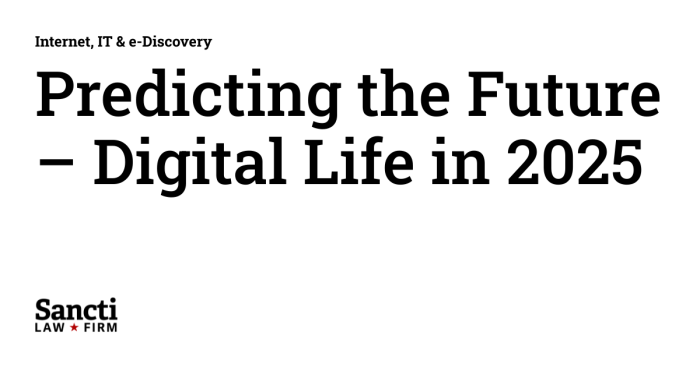
The year 2025 is expected to witness a significant transformation in the global technological landscape, with several key technologies shaping the way we live, work, and interact. These trends are projected to have a profound impact on various industries, revolutionizing processes, enhancing efficiency, and driving innovation across the board.
Artificial Intelligence (AI)
AI is poised to revolutionize industries such as healthcare, finance, manufacturing, and transportation by enabling automation, predictive analytics, and personalized services. Through machine learning algorithms, AI will optimize processes, improve decision-making, and drive cost savings for businesses globally.
Internet of Things (IoT)
The IoT ecosystem is expected to expand exponentially by 2025, connecting billions of devices and enabling seamless communication between them. This interconnected network will revolutionize industries like smart cities, agriculture, and retail, enhancing efficiency, productivity, and sustainability.
Cybersecurity
As technology advances, the importance of cybersecurity becomes paramount to safeguard data, systems, and networks from cyber threats. By 2025, businesses across industries will prioritize cybersecurity measures to protect sensitive information, maintain trust with customers, and ensure operational resilience.
5G Technology
The rollout of 5G networks will revolutionize connectivity, enabling faster data speeds, lower latency, and enhanced network capacity. This technology will pave the way for innovations in areas like autonomous vehicles, virtual reality, and telemedicine, transforming the way we communicate and interact in the digital world.
Digital Transformation
The ongoing digital transformation will continue to reshape industries by integrating digital technologies into all aspects of business operations. By 2025, businesses that embrace digital transformation will gain a competitive edge, enhance customer experiences, and drive growth in the ever-evolving digital economy.
Artificial Intelligence (AI) Advancements
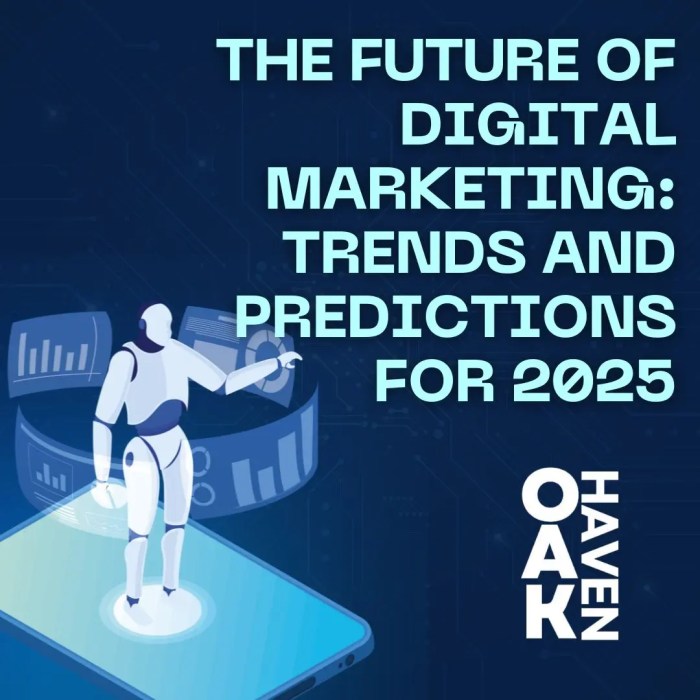
Artificial Intelligence (AI) is set to undergo significant advancements by 2025, with the potential to transform various industries and daily life as we know it.
Healthcare Industry Revolution
- AI is predicted to revolutionize the healthcare industry by improving diagnosis accuracy and treatment effectiveness through advanced algorithms and machine learning.
- Healthcare providers can utilize AI-powered tools to streamline administrative tasks, enhance patient care, and personalize treatment plans based on individual data.
- From predictive analytics to robotic surgeries, AI technology is poised to enhance patient outcomes and overall healthcare efficiency.
Finance Sector Transformation
- AI is expected to revolutionize the finance sector by optimizing risk management, fraud detection, and customer service through automated processes and data analysis.
- Financial institutions can leverage AI algorithms to make informed investment decisions, detect anomalies in transactions, and provide personalized financial recommendations to clients.
- With AI advancements, the finance industry can enhance security measures, improve operational efficiency, and offer innovative financial products and services to customers.
Transportation Industry Evolution
- AI is set to revolutionize the transportation industry by enabling autonomous vehicles, optimizing traffic flow, and enhancing logistics operations through predictive modeling and real-time data analysis.
- Self-driving cars, drones, and smart transportation systems will rely on AI technology to improve road safety, reduce congestion, and enhance overall transportation efficiency.
- By integrating AI-powered solutions, the transportation sector can achieve sustainable mobility, reduce environmental impact, and offer seamless travel experiences to passengers.
Ethical Implications of AI Integration
- The widespread integration of AI in daily life raises ethical concerns related to data privacy, algorithm bias, job displacement, and autonomous decision-making.
- Ensuring transparency, accountability, and fairness in AI systems is crucial to mitigate potential risks and uphold ethical standards in various sectors utilizing AI technology.
- Ethical frameworks, regulations, and responsible AI practices are essential to address the ethical implications of AI integration and safeguard against unintended consequences in society.
Internet of Things (IoT) Expansion
The Internet of Things (IoT) is set to experience significant growth in the upcoming years, revolutionizing the way we interact with technology and our environment.IoT devices are projected to become more prevalent in various aspects of our lives, from smart homes to smart cities and workplaces.
These devices will be interconnected, allowing for seamless communication and data sharing to enhance efficiency and convenience
Enhancement of Smart Homes
- Smart thermostats that adjust temperature settings based on occupancy and outside weather conditions.
- Connected appliances that can be controlled remotely through mobile apps.
- Home security systems with cameras and sensors for real-time monitoring and alerts.
Advancements in Smart Cities
- Smart traffic management systems to optimize traffic flow and reduce congestion.
- Waste management solutions using sensors to optimize collection schedules and routes.
- Energy-efficient street lighting that adjusts brightness based on natural light levels and movement detection.
Integration in Workplaces
- Smart office buildings with automated climate control and lighting systems for energy savings.
- Asset tracking solutions for inventory management and monitoring of equipment usage.
- Employee wellness programs with IoT devices to track health metrics and promote well-being.
Cybersecurity challenges may arise with the proliferation of IoT devices, as each connected device represents a potential entry point for cyber threats. It will be crucial to implement robust security measures to protect sensitive data and ensure the integrity of IoT networks.
5G Network Rollout

The deployment of 5G technology is set to revolutionize global connectivity and communication, offering faster speeds, lower latency, and increased capacity compared to previous generations of wireless networks. This advancement is expected to have a profound impact on various industries and sectors, paving the way for new innovations and opportunities.
Impact on Industries
With the rollout of 5G networks, industries like gaming, augmented reality/virtual reality (AR/VR), and autonomous vehicles are poised to benefit significantly.
- Gaming: The low latency and high data speeds of 5G will enhance the gaming experience by enabling real-time multiplayer gaming, cloud gaming, and immersive virtual reality games.
- AR/VR: 5G will unlock the full potential of AR/VR applications, offering seamless streaming of high-definition content, interactive experiences, and improved spatial mapping for a more immersive user experience.
- Autonomous Vehicles: The ultra-reliable and low-latency communication of 5G will be crucial for enabling connected and autonomous vehicles to communicate with each other and with smart infrastructure, enhancing safety, efficiency, and overall driving experience.
Advantages and Disadvantages of 5G Networks
Advantages:
- Enhanced Speed and Capacity: 5G networks offer significantly faster speeds and increased capacity, enabling seamless streaming, faster downloads, and support for more connected devices.
- Low Latency: The low latency of 5G enables real-time communication and responsiveness, crucial for applications like autonomous vehicles, telemedicine, and industrial automation.
- Improved Efficiency: 5G networks are more energy-efficient compared to previous technologies, reducing the overall carbon footprint of wireless networks.
Disadvantages:
- Infrastructure Requirements: The implementation of 5G requires significant infrastructure upgrades, including the deployment of new towers and small cells, which can be costly and time-consuming.
- Security Concerns: The increased connectivity and complexity of 5G networks may pose new security challenges, requiring robust cybersecurity measures to protect against potential threats.
- Compatibility Issues: As 5G is a new technology, compatibility issues with older devices and networks may arise, requiring updates or replacements to fully leverage the benefits of 5G.
Ending Remarks
As we wrap up our discussion on Digilife Global Technology Trends 2025, it's clear that the fusion of innovation and technology will redefine the way we live and work in the years to come. Stay tuned for the exciting developments on the horizon.
User Queries
What are the key technologies shaping the digilife landscape by 2025?
The key technologies include AI advancements, IoT expansion, and the rollout of 5G networks.
How will AI revolutionize industries like healthcare, finance, and transportation by 2025?
AI is predicted to enhance efficiency, decision-making, and personalized services in these industries.
What potential cybersecurity challenges are posed by the proliferation of IoT devices?
Cybersecurity risks such as data breaches and unauthorized access may increase with the growth of IoT devices.
What advantages will 5G networks bring to industries like gaming, AR/VR, and autonomous vehicles?
5G networks will offer higher speeds, lower latency, and support for more connected devices, enhancing user experiences in these industries.
technology
Exploring Machine Learning Algorithms: A Comprehensive Guide
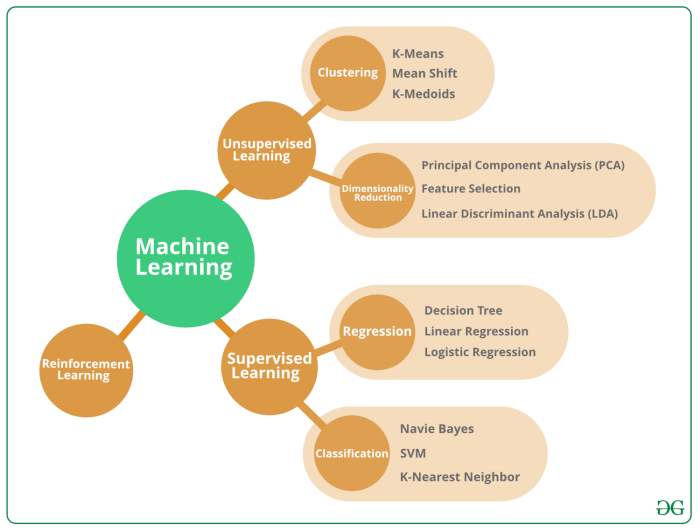
Embark on a journey through the realm of machine learning algorithms, where technology meets innovation. From real-world applications to algorithm selection, this topic delves deep into the core of modern technological advancements.
Overview of Machine Learning Algorithms

Machine learning algorithms are computer programs that can improve their performance on a task through experience. These algorithms use data to learn patterns, make predictions, and make decisions without being explicitly programmed. They are a crucial part of artificial intelligence and are used in a wide range of applications.
Real-world Applications of Machine Learning Algorithms
Machine learning algorithms are used in various real-world applications, such as:
- Recommendation systems in e-commerce platforms like Amazon and Netflix, which analyze user behavior to suggest products or content.
- Medical diagnosis systems that can help doctors in identifying diseases and recommending treatment options based on patient data.
- Fraud detection systems in banking and finance, which analyze transactions to identify suspicious activities and prevent fraudulent transactions.
- Autonomous vehicles that use machine learning algorithms to recognize objects, predict movements, and make driving decisions.
Importance of Machine Learning Algorithms in Modern Technology
Machine learning algorithms play a crucial role in modern technology by:
- Enabling automation of tasks that are too complex or time-consuming for humans to perform efficiently.
- Improving decision-making processes by analyzing large amounts of data and extracting valuable insights.
- Enhancing user experience by personalizing recommendations, search results, and interactions based on individual preferences.
- Driving innovation in various industries by enabling the development of intelligent systems and applications.
Types of Machine Learning Algorithms
Machine learning algorithms can be broadly categorized into three main types: supervised learning, unsupervised learning, and reinforcement learning. Each type has its own set of characteristics, applications, and strengths.
Supervised Learning
Supervised learning algorithms learn from labeled training data, where the model is trained on input-output pairs. The goal is to learn a mapping function that can predict the output for new input data. Common supervised learning algorithms include classification and regression.
- Classification algorithms are used to predict discrete values or categories. For example, classifying emails as spam or not spam.
- Regression algorithms, on the other hand, are used to predict continuous values. For instance, predicting house prices based on features like size, location, and number of bedrooms.
Unsupervised Learning
Unsupervised learning algorithms work with unlabeled data, where the model tries to find patterns or structures in the data without any predefined output. Clustering and recommendation algorithms are common examples of unsupervised learning.
- Clustering algorithms group similar data points together based on their features. An example is clustering customers based on their purchasing behavior.
- Recommendation algorithms suggest items to users based on their preferences or behaviors. For example, recommending movies on a streaming platform.
Reinforcement Learning
Reinforcement learning algorithms involve an agent learning to make decisions by interacting with an environment. The agent receives feedback in the form of rewards or penalties based on its actions, with the goal of maximizing rewards over time.
- Reinforcement learning is commonly used in scenarios like game playing, robotics, and autonomous driving, where the agent learns to navigate and make decisions in dynamic environments.
Commonly Used Machine Learning Algorithms

When it comes to machine learning, there are several popular algorithms that are frequently used to build models and make predictions. Each algorithm has its own strengths and weaknesses, making them suitable for different types of tasks and datasets.Linear Regression:Linear regression is a simple algorithm used for predicting a continuous target variable based on one or more input features.
It is best suited for tasks where the relationship between the input and output variables can be approximated by a straight line. For example, predicting house prices based on features like square footage, number of bedrooms, and location.Decision Trees:Decision trees are versatile algorithms that can be used for both classification and regression tasks.
They create a tree-like structure of decisions based on the input features, making them easy to interpret and explain. Decision trees are best suited for tasks where the data has a clear hierarchical structure, such as predicting whether a customer will buy a product based on their demographic information.Support Vector Machines:Support Vector Machines (SVM) are powerful algorithms used for classification tasks.
They work by finding the hyperplane that best separates different classes in the feature space. SVMs are particularly effective when dealing with high-dimensional data or when the classes are not linearly separable. For example, SVMs can be used to classify images of handwritten digits based on pixel values.Neural Networks:Neural networks are complex algorithms inspired by the structure of the human brain.
They consist of interconnected layers of neurons that process input data and learn to make predictions. Neural networks are best suited for tasks that involve large amounts of data and complex patterns, such as image and speech recognition. For example, neural networks can be used to classify images of animals based on visual features.The choice of algorithm can have a significant impact on the performance and accuracy of a machine learning model.
It is important to select the right algorithm based on the characteristics of the data and the task at hand to achieve the best results.
Machine Learning Algorithm Techniques

When it comes to machine learning algorithm techniques, there are several advanced methods that can be utilized to enhance model performance and accuracy.
Ensemble Methods: Random Forest and Gradient Boosting
Ensemble methods like Random Forest and Gradient Boosting are powerful techniques that combine multiple individual models to produce a more accurate and robust prediction.
- Random Forest: Random Forest is an ensemble learning method that constructs a multitude of decision trees during training and outputs the average prediction of individual trees. It helps reduce overfitting and improve the overall performance of the model.
- Gradient Boosting: Gradient Boosting is another ensemble method that builds models sequentially, with each new model correcting errors made by the previous ones. It is particularly effective in handling complex datasets and achieving high accuracy.
Feature Engineering and its Role
Feature engineering involves selecting, extracting, and transforming features from raw data to improve the performance of machine learning algorithms. It plays a crucial role in enhancing model accuracy and generalization by providing meaningful input variables.
- Feature Selection: Choosing the most relevant features for the model to train on can help reduce dimensionality and improve computational efficiency.
- Feature Extraction: Creating new features based on existing ones can capture more information from the data and enhance the model's predictive power.
- Feature Transformation: Normalizing, scaling, or encoding features can make them more suitable for the algorithm and improve model performance.
Hyperparameter Tuning and Optimization
Hyperparameter tuning involves selecting the optimal set of hyperparameters for a machine learning algorithm to achieve the best performance. It is essential for fine-tuning models and improving their accuracy and efficiency.
- Grid Search: Grid Search is a common method used for hyperparameter tuning, where a grid of hyperparameter values is specified, and the best combination is selected based on cross-validation results.
- Random Search: Random Search is another approach that randomly samples hyperparameter values from predefined ranges to find the optimal configuration, which can be more efficient than Grid Search in certain cases.
- Bayesian Optimization: Bayesian Optimization is a probabilistic model-based technique that uses past evaluation results to guide the search for optimal hyperparameters, making the process more efficient and effective.
Conclusion
In conclusion, machine learning algorithms play a pivotal role in shaping the future of technology. Understanding their types, techniques, and impact is essential for staying ahead in this ever-evolving field.
FAQ Overview
What are some popular machine learning algorithms?
Popular machine learning algorithms include Linear Regression, Decision Trees, Support Vector Machines, and Neural Networks.
How do machine learning algorithms impact model performance?
The selection of algorithms directly affects model performance and accuracy, influencing the outcomes of tasks.
What is the significance of hyperparameter tuning in machine learning algorithms?
Hyperparameter tuning is crucial for optimizing algorithm parameters to achieve the best possible results in model training.
technology
Exploring Digilife Digital Transformation Benchmarking Tools
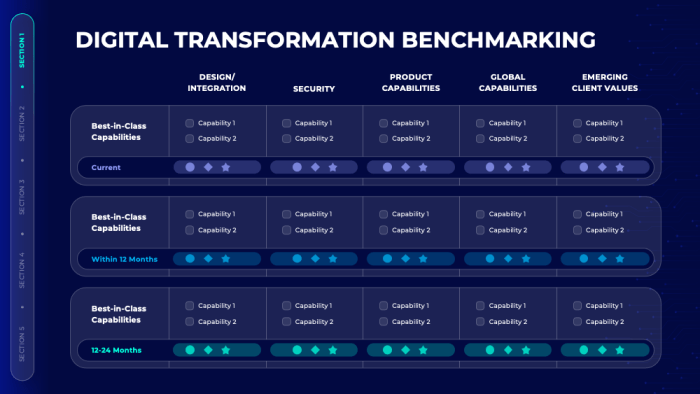
Embark on a journey into the realm of Digilife Digital Transformation Benchmarking Tools, where innovation meets efficiency. In this rapidly evolving digital landscape, these tools play a crucial role in shaping the future of businesses worldwide. Let's delve deeper into the world of benchmarking tools and their impact on digital transformation.
Overview of Digilife Digital Transformation Benchmarking Tools
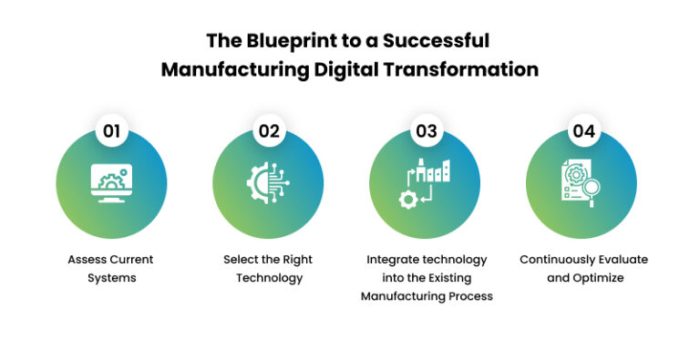
Digital transformation benchmarking tools are essential resources that help organizations assess their progress in adopting digital technologies and processes compared to industry standards and competitors. These tools provide insights into areas that need improvement, highlight best practices, and enable organizations to set achievable goals for their digital transformation journey.
Examples of Popular Tools in the Market
- Digital Pulse by Deloitte: This tool offers a comprehensive assessment of an organization's digital capabilities and provides actionable insights to drive transformation.
- Forrester Digital Business Transformation Index: Forrester's tool helps organizations evaluate their digital maturity and identify areas for growth and innovation.
- McKinsey Digital Quotient: This tool assesses an organization's digital capabilities across various dimensions and provides recommendations for improvement.
Importance of Benchmarking Tools in Digital Transformation Initiatives
Benchmarking tools play a crucial role in digital transformation initiatives by providing a clear roadmap for organizations to follow. They enable companies to measure their progress, identify gaps in their digital strategies, and learn from industry leaders. By using benchmarking tools, organizations can make informed decisions, prioritize initiatives, and accelerate their digital transformation journey effectively.
Key Features of Digilife Digital Transformation Benchmarking Tools
When it comes to digital transformation, Digilife offers a range of essential features in their benchmarking tools that can help businesses navigate and optimize their digital journey effectively.
Data Analytics and Insights
One key feature of Digilife's benchmarking tools is the robust data analytics capabilities they provide. These tools offer in-depth insights into various aspects of a business's digital presence, performance, and customer interactions. By analyzing this data, businesses can identify trends, opportunities, and areas for improvement to enhance their digital strategies.
Competitor Benchmarking
Another valuable feature is the ability to compare a business's digital performance with that of its competitors. Digilife's tools allow businesses to benchmark themselves against industry peers, identify competitive gaps, and devise strategies to stay ahead in the digital landscape.
Customized Recommendations
Digilife's benchmarking tools also provide customized recommendations based on the data analysis and benchmarking results. These recommendations help businesses tailor their digital transformation initiatives to address specific pain points, capitalize on strengths, and achieve their digital objectives effectively.
Real-time Monitoring and Alerts
Furthermore, Digilife's tools offer real-time monitoring capabilities and alerts, allowing businesses to stay informed about any sudden changes or anomalies in their digital performance. This proactive approach enables businesses to take immediate action and make timely adjustments to optimize their digital strategies.
Implementation of Digilife Digital Transformation Benchmarking Tools
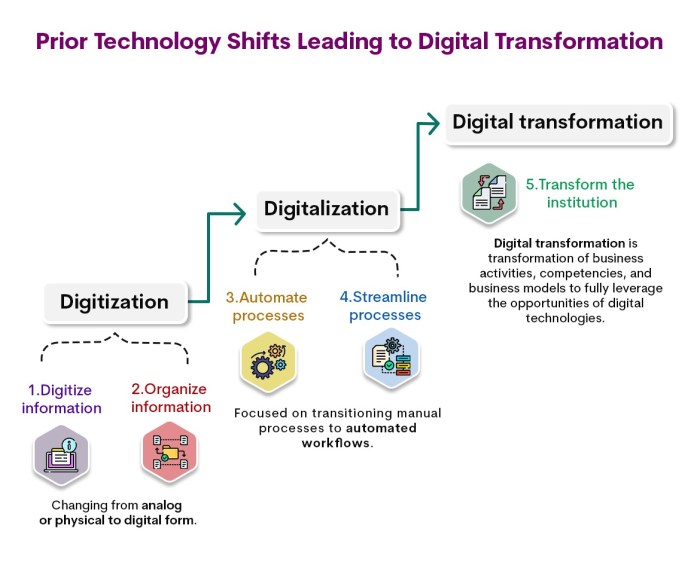
Implementing Digilife Digital Transformation Benchmarking Tools within an organization is a crucial step towards enhancing digital capabilities and staying competitive in the market. The process involves careful planning, execution, and monitoring to ensure successful integration.
Steps for Integration
- Assess Current State: Begin by evaluating the organization's current digital capabilities, processes, and systems to identify areas that need improvement.
- Set Clear Objectives: Define specific goals and objectives that the benchmarking tools will help achieve, such as optimizing processes, enhancing customer experience, or increasing efficiency.
- Choose the Right Tools: Select the appropriate Digilife Digital Transformation Benchmarking Tools based on the identified needs and objectives of the organization.
- Train Employees: Provide training and support to employees who will be using the benchmarking tools to ensure they understand how to leverage the tools effectively.
- Integrate with Existing Systems: Seamlessly integrate the benchmarking tools with the organization's existing systems and processes to ensure smooth operation and data flow.
Best Practices for Successful Implementation
- Secure Leadership Buy-In: Gain support from top management to prioritize the implementation of benchmarking tools and allocate resources accordingly.
- Communicate Effectively: Keep all stakeholders informed about the implementation process, including the benefits and expected outcomes of using the benchmarking tools.
- Monitor Progress: Regularly track and monitor the performance of the benchmarking tools to measure their effectiveness and make any necessary adjustments.
- Encourage Collaboration: Foster collaboration among different departments and teams to ensure the seamless implementation and utilization of the benchmarking tools.
- Continuous Improvement: Continuously review and update the benchmarking tools and processes to adapt to changing business needs and technological advancements.
Benefits and Challenges of Using Digilife Digital Transformation Benchmarking Tools

Implementing Digilife Digital Transformation Benchmarking Tools can provide organizations with various advantages, but it also comes with certain challenges that need to be addressed for effective utilization.
Benefits of Using Digilife Digital Transformation Benchmarking Tools
Utilizing Digilife Digital Transformation Benchmarking Tools offers the following benefits:
- Access to valuable insights: These tools provide in-depth data and analysis that help organizations understand their digital transformation progress compared to industry standards.
- Identification of improvement areas: By benchmarking against industry best practices, organizations can pinpoint areas that need enhancement and prioritize their digital transformation efforts.
- Enhanced decision-making: With data-driven insights, organizations can make informed decisions to drive their digital transformation strategies effectively.
- Competitive advantage: By benchmarking against competitors, organizations can identify opportunities to outperform in the digital landscape and gain a competitive edge.
Challenges of Using Digilife Digital Transformation Benchmarking Tools
Despite the benefits, organizations may face the following challenges when using Digilife Digital Transformation Benchmarking Tools:
- Data accuracy and reliability: Ensuring the accuracy and reliability of the data used for benchmarking can be challenging, especially when dealing with large datasets from various sources.
- Resistance to change: Implementing digital transformation initiatives based on benchmarking results may face resistance from employees or stakeholders accustomed to existing processes.
- Integration complexity: Integrating benchmarking tools with existing systems and processes can be complex and require additional resources for seamless implementation.
- Cost implications: Investing in benchmarking tools and the resources needed for implementation and training can pose financial challenges for some organizations.
Strategies to Overcome Challenges and Maximize Benefits
- Ensure data quality: Establish data governance practices and validation processes to maintain data accuracy and reliability for benchmarking purposes.
- Communication and change management: Implement effective communication strategies and change management practices to address resistance and ensure smooth adoption of digital transformation initiatives.
- Collaboration and training: Foster collaboration between teams and provide adequate training to ensure seamless integration of benchmarking tools with existing systems and processes.
- Cost-benefit analysis: Conduct a thorough cost-benefit analysis to understand the return on investment from using benchmarking tools and justify the financial implications.
Future Trends in Digilife Digital Transformation Benchmarking Tools
In the rapidly evolving landscape of digital transformation, benchmarking tools play a crucial role in helping organizations stay competitive and innovative. As technology continues to advance, it is essential to explore the future trends that will shape the development of these tools and their impact on businesses.
Integration of AI and Machine Learning
With the increasing adoption of artificial intelligence (AI) and machine learning in various industries, it is inevitable that these technologies will also influence digital transformation benchmarking tools. AI-powered algorithms can analyze vast amounts of data quickly and accurately, providing valuable insights for organizations to make data-driven decisions.
Machine learning capabilities can help in identifying patterns and trends that humans may overlook, improving the accuracy and efficiency of benchmarking processes.
Enhanced Data Visualization and Predictive Analytics
Future benchmarking tools are likely to focus on enhancing data visualization capabilities to make complex data more accessible and understandable for users. By leveraging interactive dashboards and visual representations, organizations can gain deeper insights into their performance metrics and benchmarking results.
Additionally, predictive analytics will enable businesses to forecast future trends and potential outcomes based on historical data, empowering them to proactively address challenges and capitalize on opportunities.
Personalization and Customization Features
As organizations strive to differentiate themselves in a competitive market, future benchmarking tools may offer more personalized and customizable features. Tailoring benchmarking metrics and KPIs to specific business goals and objectives can provide more relevant insights for decision-making. Customizable dashboards and reports will allow users to focus on the metrics that matter most to their unique business requirements, enabling a more targeted and effective approach to digital transformation benchmarking.
Blockchain Technology for Data Security
The integration of blockchain technology in digital transformation benchmarking tools can enhance data security and integrity. By utilizing blockchain's decentralized and immutable ledger system, organizations can ensure the confidentiality and authenticity of their benchmarking data. This technology can help in preventing data tampering or unauthorized access, maintaining the trust and credibility of benchmarking results.
Final Summary
In conclusion, Digilife Digital Transformation Benchmarking Tools provide a roadmap for organizations to navigate the complexities of digital evolution. By embracing these tools and staying ahead of emerging trends, businesses can unlock their full potential in the digital realm.
Essential FAQs
What are digital transformation benchmarking tools?
Digital transformation benchmarking tools are software or platforms used to assess an organization's digital progress compared to industry standards and competitors.
How do benchmarking tools help in digital transformation initiatives?
These tools provide valuable insights into areas needing improvement, help set benchmarks for success, and guide organizations in their digital transformation journey.
What are some common challenges faced when using benchmarking tools?
Common challenges include data integration issues, resistance to change within the organization, and the need for skilled personnel to interpret benchmarking data effectively.
technology
Unveiling the Power of Digilife Business Intelligence Solutions

Digilife business intelligence solutions pave the way for a captivating exploration, offering a detailed narrative rich in insights and originality.
As we delve deeper into the realm of business intelligence solutions, a world of innovation and strategic decision-making unfolds before us.
Overview of Digilife Business Intelligence Solutions
Digilife offers cutting-edge business intelligence solutions designed to help businesses make informed decisions based on data analysis and insights.
In today's fast-paced and competitive business environment, having access to accurate and timely information is crucial for staying ahead of the curve. Business intelligence solutions play a key role in collecting, processing, and analyzing data to provide valuable insights that drive strategic decision-making.
Differentiation from Competitors
- Digilife's business intelligence solutions are highly customizable to meet the unique needs of each client, ensuring a tailored approach for maximum impact.
- The integration of advanced analytics tools and machine learning algorithms sets Digilife apart, enabling businesses to uncover hidden patterns and trends in their data.
- Real-time data visualization capabilities allow users to track key performance indicators and make data-driven decisions on the fly, giving them a competitive edge.
Features of Digilife Business Intelligence Solutions
Digilife's business intelligence solutions offer a range of key features that cater to the diverse needs of businesses across various industries. These features are designed to provide valuable insights and data-driven decisions for organizations.
Data Visualization
- Interactive dashboards and reports for easy data interpretation.
- Graphical representation of complex data sets for better understanding.
- Customizable visualization options to suit specific business requirements.
Advanced Analytics
- Predictive analytics to forecast trends and outcomes.
- Descriptive analytics for historical data analysis.
- Prescriptive analytics to recommend the best course of action.
Self-Service BI
- Empowers users to generate reports and analyze data independently.
- Reduces dependency on IT teams for data queries and insights.
- Improves decision-making agility and efficiency within the organization.
Integration Capabilities
- Seamless integration with various data sources and applications.
- Real-time data connectivity for instant updates and analysis.
- Support for APIs and data connectors for smooth data flow.
Scalability and Customization
- Flexible solutions that can scale with the growth of the business.
- Customizable features and modules to meet specific industry requirements.
- Adaptable architecture that allows for easy customization and expansion.
Implementation Process of Digilife Business Intelligence Solutions

Implementing Digilife's business intelligence solutions involves several key steps to ensure a successful deployment. Here are the detailed steps and best practices for a smooth implementation process:
1. Planning and Preparation
- Define clear objectives and goals for the implementation.
- Assess the current data infrastructure and identify any gaps or challenges.
- Create a project plan outlining timelines, resources, and responsibilities.
2. Data Collection and Integration
- Gather all relevant data sources needed for the business intelligence solution.
- Ensure the integration of data from different systems to create a unified view.
- Implement data quality checks to maintain accuracy and consistency.
3. Tool Selection and Configuration
- Select the appropriate BI tools based on the specific requirements of the organization.
- Configure the tools to match the data sources and visualization needs.
- Customize the dashboards and reports to meet user preferences and business objectives.
4. Testing and Validation
- Conduct thorough testing of the BI solution to ensure functionality and accuracy.
- Validate the data outputs against known benchmarks or historical data.
- Engage end-users in the testing phase to gather feedback and make necessary adjustments.
5. Training and Support
- Provide comprehensive training to users on how to navigate and utilize the BI tools effectively.
- Offer ongoing support to address any issues or questions that may arise during the implementation process.
- Establish a feedback loop for continuous improvement and optimization of the BI solution.
Benefits of Using Digilife Business Intelligence Solutions

Implementing Digilife Business Intelligence Solutions can provide various advantages to businesses, ultimately enhancing decision-making processes and driving growth.
Improved Decision-making Processes
By utilizing Digilife's solutions, businesses can access real-time data analytics and insights, enabling them to make informed decisions quickly and accurately. This leads to better strategic planning, resource allocation, and overall operational efficiency.
Enhanced Performance and Productivity
- With the help of Digilife Business Intelligence Solutions, businesses can streamline processes, identify bottlenecks, and optimize workflows for improved performance and productivity.
- By leveraging data-driven insights, organizations can focus on areas that need attention, allocate resources effectively, and drive overall growth and profitability.
Case Studies and Success Stories
Several businesses across various industries have benefitted from implementing Digilife Business Intelligence Solutions:
Company A saw a 20% increase in sales revenue within the first quarter of using Digilife's solutions, thanks to targeted marketing strategies driven by data analytics.
Company B reduced operational costs by 15% by identifying inefficiencies in their supply chain management through the use of Digilife's Business Intelligence Solutions.
Future Trends in Business Intelligence Solutions
As technology continues to evolve, the business intelligence industry is also experiencing significant changes. Companies like Digilife are constantly adapting to these emerging trends to remain competitive and provide cutting-edge solutions to their clients. Let's explore some of the future trends in business intelligence solutions and how Digilife is staying ahead of the curve.
Artificial Intelligence and Machine Learning Integration
One of the key trends in business intelligence is the integration of artificial intelligence (AI) and machine learning (ML) capabilities. These technologies enable businesses to analyze large datasets more efficiently, identify patterns, and make data-driven decisions in real-time. Digilife is investing in AI and ML to enhance its BI solutions, providing clients with advanced analytics and predictive insights.
Data Governance and Security
With the increasing focus on data privacy and security, data governance has become a crucial aspect of business intelligence solutions. Companies are now looking for BI platforms that offer robust data protection measures and compliance with regulations like GDPR. Digilife is prioritizing data governance and security in its solutions to ensure that client data is safeguarded and handled ethically.
Cloud-Based BI Solutions
Cloud computing has revolutionized the way businesses store, access, and analyze data. Cloud-based business intelligence solutions offer scalability, flexibility, and cost-effectiveness, making them increasingly popular among organizations of all sizes. Digilife is leveraging the power of the cloud to deliver BI solutions that are agile, scalable, and accessible from anywhere, enabling clients to make informed decisions on the go.
IoT Integration for Real-Time Analytics
The Internet of Things (IoT) is generating vast amounts of data from connected devices, creating new opportunities for real-time analytics. Business intelligence solutions that can harness IoT data for actionable insights are in high demand. Digilife is exploring IoT integration in its BI solutions to help clients monitor and analyze data streams in real-time, enabling proactive decision-making and operational efficiency.
Concluding Remarks
In conclusion, Digilife's business intelligence solutions stand as a beacon of efficiency and effectiveness in the ever-evolving landscape of modern business practices.
General Inquiries
How does Digilife's business intelligence solutions differentiate from competitors?
Digilife's solutions stand out due to their unparalleled scalability, customization options, and robust features tailored to diverse business needs.
What are the key benefits of using Digilife's business intelligence solutions?
Businesses can gain advantages such as improved decision-making processes, enhanced efficiency, and streamlined operations by leveraging Digilife's solutions.
What are the future trends in business intelligence solutions that Digilife is adapting to?
Digilife is embracing emerging trends like AI-driven analytics, real-time data processing, and predictive analytics to stay ahead in the competitive business intelligence industry.
-
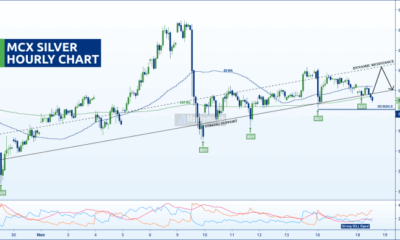
 Investing2 months ago
Investing2 months agoSilver MCX Live Price with Real Time Updates: A Comprehensive Guide
-
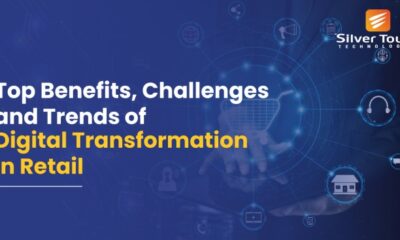
 Business2 months ago
Business2 months agoExploring Digilifes Digital Transformation Case Studies
-

 Trading2 months ago
Trading2 months agoSilver MCX Live Price Real Time Updates: Stay Ahead in the Trading Game
-
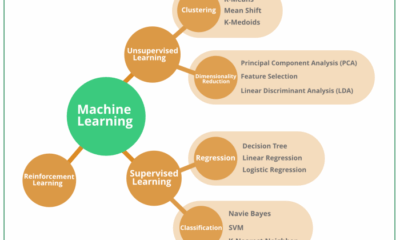
 technology2 months ago
technology2 months agoExploring Machine Learning Algorithms: A Comprehensive Guide
-
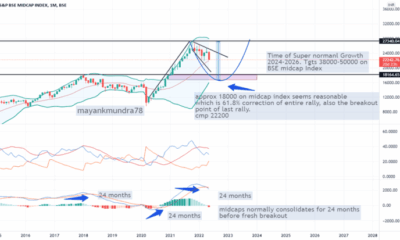
 Finance2 months ago
Finance2 months agoExploring BSE Midcap Index Today Market Insights
-

 technology2 months ago
technology2 months agoUnveiling the Power of Digilife Business Intelligence Solutions
-

 Personal Finance2 months ago
Personal Finance2 months agoCrafting Your Wealth: Smart Dollar Wealth Building Strategies
-
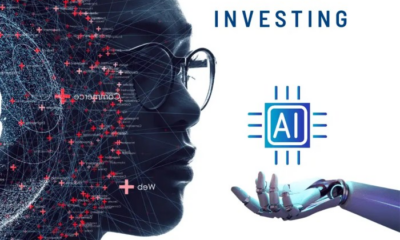
 Finance2 months ago
Finance2 months agoUnlocking AI Investment Opportunities: A Comprehensive Guide



